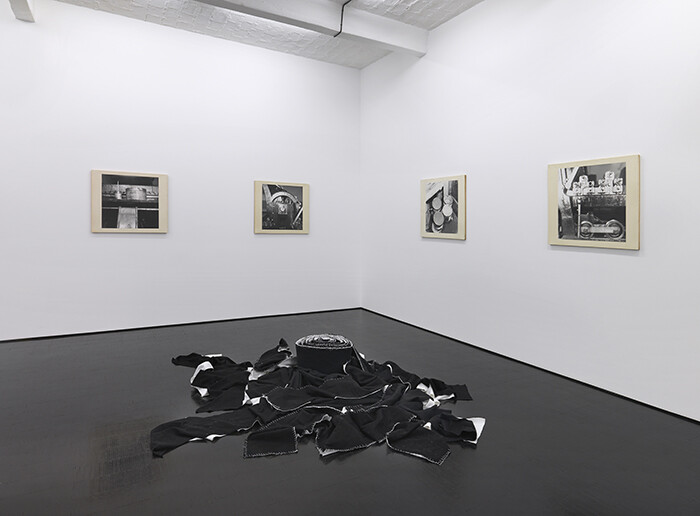Benno von Archimboldi—the mythical writer in Roberto Bolaño’s 2004 novel 2666—used to draw algae as a child. The meticulousness with which the boy captured the greenish pulp he encountered on his prohibited dives in muddy waters extended into his writing as a grown man. None of this is known to the group of literary critics who devote their lives to Archimboldi. They roam the world in search of snippets of information that might enrich their meager outputs. No institution will ever come to help them. The fictive search mirrors contemporary aesthetic politics in an eerie way. After post-communism fell ill, when ideological etiquettes no longer fit Eastern Europe, the art world’s interest in the region’s manifold visual territories has grown in inverse proportion to the understanding of its context. Due to the homogenization of taste, Eastern Europe appears like a treasure trove, set apart from the corporate consolidation of aesthetics. One wonders if all of its Archimboldis will ever receive the attention they deserve.
Among the artists from Romania, Geta Brătescu (b.1926) is the grande dame of Conceptualism. Her work has established a discreet, object-bound, almost poetic presence in the country and elsewhere. It has been in the spotlight for several years now. The artist’s show “Atelier Continuu” at Berlin’s Galerie Barbara Weiss is arranged around 60 years of ongoing artistic practice. Not surprisingly, it concentrates on drawing, Brătescu’s favored medium. Brătescu has described drawing as an exploration and training procedure that guides her through the pursuit of forms. Upon entering the gallery, we are greeted by a paper and collage piece, The Strangers (2007). Resembling a continuous stationary, it spills out of a repository, a leporello. An imaginary term, Ombiect—composed out of the Romanian words for “human,” om, and “object,” obiect—adorns it. Underneath the word, a collage of a bird in flight repeats and is surrounded by crimson and black scribbles. The subalterns of art—be it random graphisms like doodles or technical objects like a typewriter—are literally freed in Brătescu’s work to assist her in her quest to approach drawing from multifold perspectives.
It is tempting though to interpret Brătescu’s swerve around the medium of painting, which “any communist representative would want to have in his living room”1, as a graceful act of system sabotage. Over decades of regime changes, her work evolved in the privacy of her studio, exploring “self-representation”2 rather than representation. Still, it cultivated awareness for the precariousness of the public. At Barbara Weiss, we get a glimpse of this awareness through two works that are positioned off-center in the gallery—a series of four black-and-white photographs and a textile object, both entitled Typography (1974). Brătescu exhibited these works at Galeria Nuoă, Bucharest, in 1974, together with assemblages of remnants found on the floors of a local printer’s workshop. The voluminous and frayed coil of black-and-white molleton was specially re-made for Barbara Weiss following Brătescu’s sketches from 30 years ago. The agent of creation—in this case, the hands, needle, and thread of an unknown seamstress—abandoned the one given rule of labor: to finish. Coarse, binary stitches sporadically punctuate the thick cloth at its edges and keep it undone. A reiterative trajectory is established between the two-dimensional, open surface of the material and the three-dimensional object. On its own, the coil is nothing more than an ambiguous object that lingers in a state of indeterminacy. The four black-and-white photographs hung on the wall above embrace it with significance. At 80 x 73 cm in size, the images are rather large and offer meticulous views of a printing press. Every screw, knurl, and smear of grease is rendered visible. Not to be confused with the early twentieth-century machinic aestheticization of the Bauhaus School nor the American photography masters, Brătescu’s visual investigation of the printing press’s elements gives insight into—to borrow the words of French philosopher Gilbert Simondon—a “concretization of a technical object coming into being.”3
The hardware and even its fluids, like the white ink, are to be socially accepted in their material existence, labor, and artifice. The fight for the right of objects, nevertheless, meant something completely different in mid-1970s—at the end of the period of Romania’s political thawing and economical progress—than it does now in our post-Latourian, accelerationist context. Unlike Brătescu’s 1974 audience in Bucharest, we don’t have the opportunity to mingle with the workers of the printing workshop, who were invited to the Galeria Nuoă opening by the artist and its director Anca Arghir. Back then, photographs of a workshop devoid of workers and filled with unattended machines had the potential to instigate the reevaluation of labor relations. However, the tightening of the regime in Romania short thereafter brought this window of reevaluation to a close, inducing a withdrawal, if not disappearance of alternate visualities. Despite the lack of this contextual background at Barbara Weiss, we can detect the reason why Brătescu’s work, in its quiet exquisiteness, increasingly captivates the interest of the art world today. It is a paradigm for art production in Romania that has “minded its own business.”4 Avoiding the signs of any ideology (including the ideology of westernization), her work makes today’s preoccupation with the unique and the incommensurable less disappointing.
Adriana Oprea, “Interview with Geta Brătescu,” trans. Adriana Oprea and Anca Oroveanu, ARTMargins ONLINE (December 23, 2013), http://www.artmargins.com/index.php/5-interviews/730-interview-with-geta-brtescu-.
Alina Şerban, “Strategies of Self-Representation,” in: Geta Brătescu. Atelierul / The Studio, ed. Alina Şerban (Berlin: Sternberg Press, 2014), 156–163.
Gilbert Simondon, Du mode d’existence des objects techniques (Paris: Aubier, 1958), 19–23.
Oprea, “Interview with Geta Brătescu,” unpaginated.










